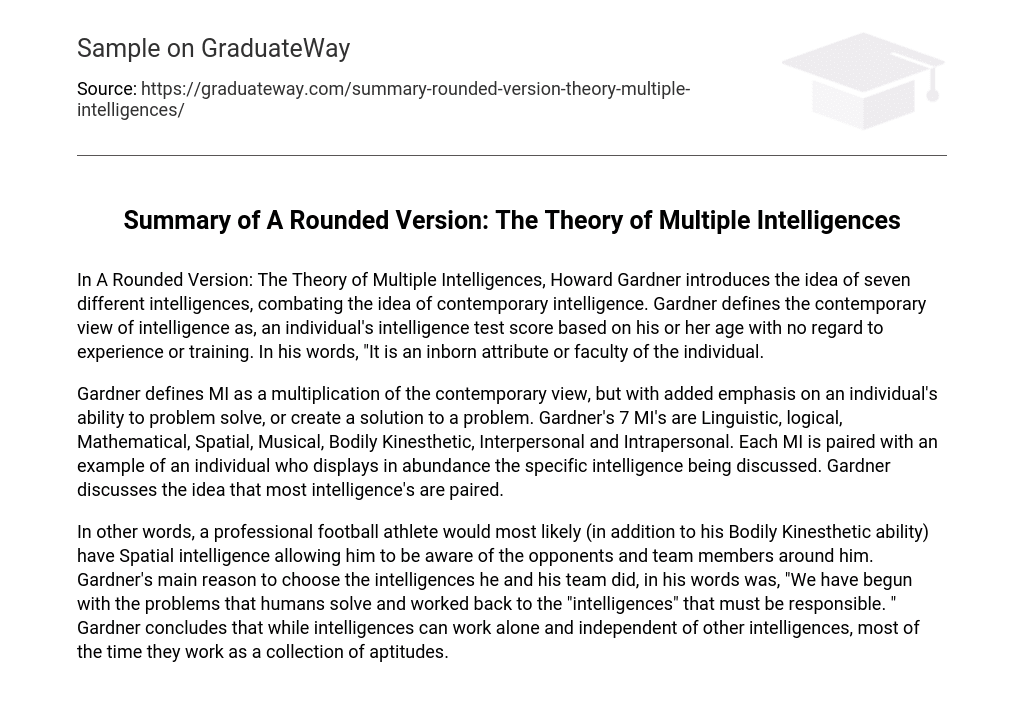In A Rounded Version: The Theory of Multiple Intelligences, Howard Gardner introduces the idea of seven different intelligences, combating the idea of contemporary intelligence. Gardner defines the contemporary view of intelligence as, an individual’s intelligence test score based on his or her age with no regard to experience or training. In his words, “It is an inborn attribute or faculty of the individual.
Gardner defines MI as a multiplication of the contemporary view, but with added emphasis on an individual’s ability to problem solve, or create a solution to a problem. Gardner’s 7 MI’s are Linguistic, logical, Mathematical, Spatial, Musical, Bodily Kinesthetic, Interpersonal and Intrapersonal. Each MI is paired with an example of an individual who displays in abundance the specific intelligence being discussed. Gardner discusses the idea that most intelligence’s are paired.
In other words, a professional football athlete would most likely (in addition to his Bodily Kinesthetic ability) have Spatial intelligence allowing him to be aware of the opponents and team members around him. Gardner’s main reason to choose the intelligences he and his team did, in his words was, “We have begun with the problems that humans solve and worked back to the “intelligences” that must be responsible. ” Gardner concludes that while intelligences can work alone and independent of other intelligences, most of the time they work as a collection of aptitudes.





